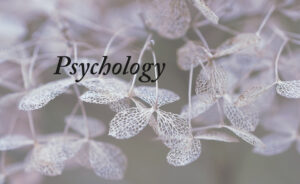Start with fixing a time and a suitable place for the practice of concentration, preferably short concentrations of 20 to 30 minutes twice a day. Sri Aurobindo explains.
‘1) What meditation exactly means.
There are two words used in English to express the Indian idea of Dhyana, “meditation” and “contemplation”. Meditation means properly the concentration of the mind on a single train of ideas which work out a single subject. Contemplation means regarding mentally a single object, image, idea so that the knowledge about the object, image or idea may arise naturally in the mind by force of the concentration. Both these things are forms of dhyana; for the principle of dhyana is mental concentration whether in thought, vision or knowledge.
There are other forms of dhyana. There is a passage in which Vivekananda advises you to stand back from your thoughts, let them occur in your mind as they will and simply observe them & see what they are. This may be called concentration in self-observation.
This form leads to another, the emptying of all thought out of the mind so as to leave it a sort of pure vigilant blank on which the divine knowledge may come and imprint itself, undisturbed by the inferior thoughts of the ordinary human mind and with the clearness of a writing in white chalk on a blackboard. You will find that the Gita speaks of this rejection of all mental thought as one of the methods of Yoga and even the method it seems to prefer. This may be called the dhyana of liberation, as it frees the mind from slavery to the mechanical process of thinking and allows it to think or not think as it pleases and when it pleases, or to choose its own thoughts or else to go beyond thought to the pure perception of Truth called in our philosophy Vijnana.
Meditation is the easiest process for the human mind, but the narrowest in its results; contemplation more difficult, but greater; self-observation and liberation from the chains of Thought the most difficult of all, but the widest and greatest in its fruits. One can choose any of them according to one’s bent and capacity. The perfect method is to use them all, each in its own place and for its own object; but this would need a fixed faith and firm patience and a great energy of Will in the self-application to the Yoga.
2) What should be the objects or ideas for meditation?
Whatever is most consonant with your nature and highest aspirations. But if you ask me for an absolute answer, then I must say that Brahman is always the best object for meditation or contemplation, and the idea on which the mind should fix is that of God in all, all in God and all as God. It does not matter essentially whether it is the Impersonal or the Personal God or, subjectively, the One Self. But this is the idea I have found the best, because it is the highest and embraces all other truths, whether truths of this world or of the other worlds or beyond all phenomenal existence,—”All this is the Brahman.”‘
In this yoga the concentration is on the heart centre or in the head or above the head on the Mother’s Presence through her form as we see in the photographs. If it is difficult to close the eyes and meditate one can concentrate upon Her photograph.
Affectionately,
Alok Da



